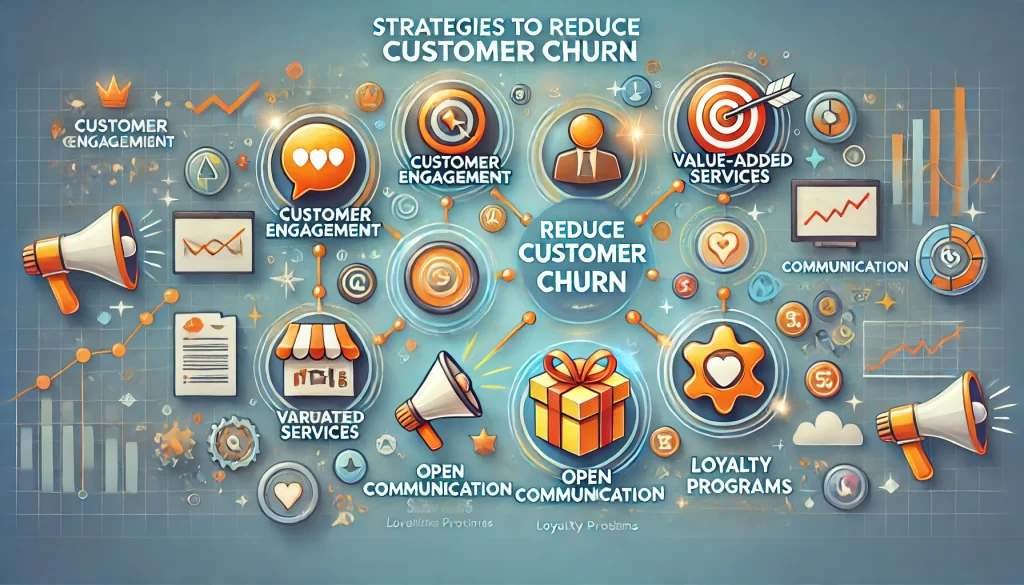In the fiercely competitive landscape of today’s market, customer retention has become increasingly vital. Customer churn, which refers to the loss of customers over a specified time frame, can greatly affect the growth and viability of any business. This article examines the complexities of customer churn analysis, an essential process for grasping the reasons behind customer departures and helping businesses refine their retention strategies.
Definition of Customer Churn
Customer churn, also known as customer attrition, is defined as the percentage of customers who discontinue using a company’s products or services within a certain period. This metric is typically expressed as a rate, calculated by dividing the number of customers lost by the total number of customers at the beginning of the period.
The Significance of Churn Analysis in Business
Understanding customer churn is crucial since acquiring new customers often comes at a higher cost than keeping existing ones. Research indicates that increasing customer retention by just 5% can lead to profit growth of 25% to 95%. Thus, churn analysis equips businesses with insights into customer behavior, allowing them to devise effective retention strategies and enhance their financial performance.

Article Structure Overview
This article will cover:
- An exploration of customer churn, including its types and causes.
- The latest trends in customer churn analysis .
- Techniques for effectively analyzing churn.
- Best practices for minimizing churn.
- Tools and software available for churn analysis.
- A conclusion summarizing the key takeaways.
Section 1: Understanding Customer Churn
Types of Churn: Voluntary and Involuntary
Churn can be classified into two primary categories: voluntary and involuntary churn.
- Voluntary Churn occurs when customers decide to leave, often due to dissatisfaction, better offers from competitors, or changing personal needs. Factors such as product quality, customer service, and overall experience play a significant role in this type of churn.
- Involuntary Churn happens when customers leave without intending to, frequently due to issues like payment failures, account closures, or business shutdowns. Although businesses have less control over this type of churn, understanding its underlying causes can help mitigate its effects.
Common Triggers of Customer Churn
Identifying the fundamental causes of churn is critical for crafting effective retention strategies. Common triggers include:
- Poor Customer Service: Negative experiences with support can lead to dissatisfaction and eventual customer loss.
- Lack of Engagement: Customers who feel undervalued or disengaged are more likely to look for alternatives.
- Price Increases: Unexpected hikes in prices can drive customers away, especially if they find better value elsewhere.
- Quality of Products/Services: If a product does not meet expectations, it can result in churn.
The Role of Churn Analysis: Statistics and Case Studies
A study by the Harvard Business Review reveals that acquiring a new customer may cost five to twenty-five times more than retaining an existing one. Moreover, businesses that focus on customer retention strategies often experience a significant boost in customer lifetime value (CLV).
For example, Amazon utilizes advanced data analysis techniques to track customer behavior and preferences, allowing them to personalize customer experiences and effectively reduce churn.

Section 2: Current Trends in Customer Churn Analysis
As we navigate through, several trends in customer churn analysis are emerging.
The Role of AI and Machine Learning in Churn Prediction
Artificial Intelligence (AI) and Machine Learning (ML) are transforming how businesses approach churn analysis. These technologies enable organizations to analyze vast datasets and identify patterns that forecast customer behavior. For instance, Netflix employs machine learning algorithms to recommend content tailored to viewer preferences, thereby boosting customer engagement and minimizing churn.
Real-Time Analytics and Customer Feedback
Real-time analytics provide immediate insights into customer behaviors. By incorporating feedback mechanisms, businesses can swiftly pinpoint issues contributing to churn and address them proactively. Platforms such as Qualtrics facilitate the collection and analysis of customer feedback in real-time, enabling timely interventions.
Enhancing Personalization and Customer Experiences
Personalization is critical for retaining customers. Businesses that customize their offerings to cater to individual customer needs are more likely to maintain their clientele. For instance, Spotify curates personalized playlists that enhance user experiences, which has been linked to lower churn rates.
Automation in Customer Engagement
Automation tools enable businesses to maintain consistent communication with customers, thereby enhancing engagement. Automated emails, chatbots, and personalized marketing campaigns help keep customers informed and appreciated, decreasing the likelihood of churn.
Section 3: Techniques for Analyzing Churn
Effective churn analysis utilizes various techniques that can yield valuable insights.
Methods of Data Collection
Data collection forms the backbone of churn analysis. Common methods include:
- Surveys: Direct feedback from customers about their experiences and reasons for leaving.
- Usage Data: Analyzing customer interactions with products or services to spot usage patterns and potential drop-off points.
- Customer Feedback: Gathering qualitative insights through reviews and ratings.
Key Metrics to Track
To evaluate churn effectively, businesses should keep an eye on several key metrics:
- Churn Rate: The percentage of customers lost over a specific period.
- Customer Lifetime Value (CLV): The total revenue expected from a single customer throughout their relationship with the business.
- Net Promoter Score (NPS): A gauge of customer loyalty and satisfaction.
Cohort Analysis and Segmentation
Cohort analysis involves grouping customers based on shared characteristics or behaviors, allowing businesses to identify trends and patterns in churn. Segmentation helps tailor retention strategies to specific customer groups, enhancing their effectiveness.
Predictive Modeling Techniques
Predictive modeling utilizes historical data to forecast future churn. Techniques such as logistic regression, decision trees, and survival analysis can help businesses identify at-risk customers and implement focused retention strategies.

Section 4: Best Practices for Reducing Churn
To effectively minimize churn, businesses should embrace several best practices.
Strategies for Customer Engagement
Regular communication with customers is essential. Engaging customers through newsletters, social media, and personalized messages fosters relationships and loyalty.
Providing Value-Added Services
Enhancing existing products or services with additional value can boost customer satisfaction. For example, offering exclusive content, premium features, or loyalty rewards can incentivize customers to remain with the brand.
Open Communication and Feedback Mechanisms
Establishing transparent channels for communication allows customers to express their concerns and feedback. Implementing feedback loops, where customer suggestions are actively sought and acted upon, can enhance customer satisfaction and retention.
Loyalty Programs and Incentives
Loyalty programs encourage repeat business by rewarding customers for their continued patronage. Incentives such as discounts, exclusive access, and referral rewards can motivate customers to stay loyal to a brand.
Section 5: Tools and Software for Churn Analysis
In today’s data-driven environment, a variety of tools and software solutions are available for churn analysis. Here are some popular options:
Overview of Notable Churn Prediction Tools
- Akkio: A user-friendly platform employing AI for predictive analytics, assisting businesses in identifying at-risk customers.
- Qualtrics: A comprehensive customer experience management tool that gathers and analyzes customer feedback in real-time.
- Custify: A churn management tool specifically crafted for SaaS businesses, providing insights into customer health and engagement metrics.
Essential Features to Consider in Churn Analysis Software
When selecting churn analysis software, consider these features:
- Real-Time Analytics: The ability to analyze data as it is generated.
- Customizable Dashboards: Visual representations of key metrics tailored to specific business needs.
- Predictive Modeling Capabilities: Tools that can forecast churn using historical data.
- Integration with Other Systems: Compatibility with existing CRM and marketing platforms for seamless data flow.
Conclusion
In summary, customer churn analysis is a vital aspect of any effective business strategy. By understanding the types and causes of churn, leveraging the latest trends and techniques, and adopting best practices, businesses can significantly improve their customer retention efforts.
As customer behavior continues to evolve, companies must prioritize churn analysis to adapt and thrive in a competitive market. The insights gained from effective churn analysis not only help in retaining customers but also contribute to long-term business growth.




